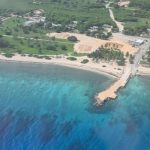Matthew will mark 2017 hurricane season
(CNS): After 15 named storms, including seven hurricanes, three of which became major ones, the 2016 season has come to its official end, with Hurricane Matthew likely to be the storm that will mark this season. The lone category 5 hurricane and one of four storms that directly impacted the region, Matthew was responsible for 1,765 deaths, mainly in Haiti. 2016 may also be remembered for the two out-of-season storms, with Hurricane Alex in January and Tropical Storm Bonnie in May.
The Cayman Islands National Weather Service said the season predictions by the experts were fairly accurate but they under-forecasted the number of major hurricanes.
Looking closer to home local weather experts pointed to the lack of rain in Cayman during this season.
“Despite the level of activity of the hurricane season the Cayman Islands rainfall totals continue to be on pace to have the driest year in record. This is a bit surprising as the areas of showers that normally impact the Cayman Islands during the Hurricane Season was limited this year. These areas of showers represent the birth place for most tropical storms,” the weather service said in a release outlining the details of the season.
Hazard Management said that just there were only two systems that resulted in severe weather notifications being issued for the Cayman Islands. On 1 August Cayman was briefly placed under a Tropical Storm Watch as Earl passed two hundred miles south of the islands. The heavy rain associated with the storm, however, passed just south of Grand Cayman. Then on 30 September a severe weather warning was issued for the Sister Islands, as Hurricane Matthew was expected to produce very rough seas and a possible storm surge of 1 to 3 feet.
The hurricane passed east of Jamaica, attaining Category 5 status and went on to become the strongest, costliest and deadliest storm of the season. As well as deaths in Haiti, Hurricane Matthew caused significant damage in the Bahamas and it has entered the history books as the deadliest Atlantic hurricane since Hurricane Stan in 2005.
In November a late season hurricane formed in the south west Caribbean Sea below the Cayman Islands, but instead of following the typical northerly track, the system headed due west, moving near San Andres Island before coming ashore on the coast of Nicaragua as a category 2 hurricane.
Category: Science & Nature, Weather



































